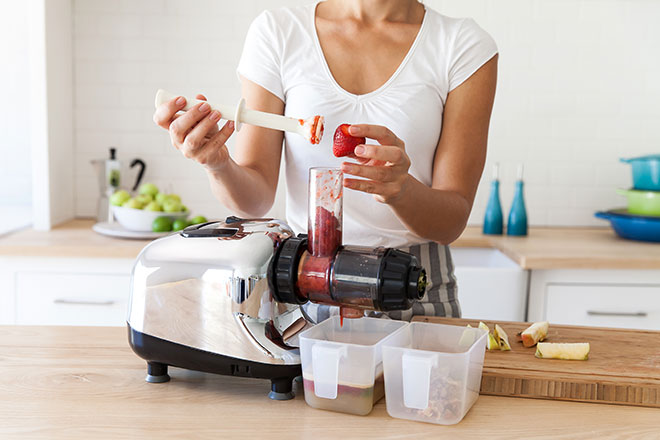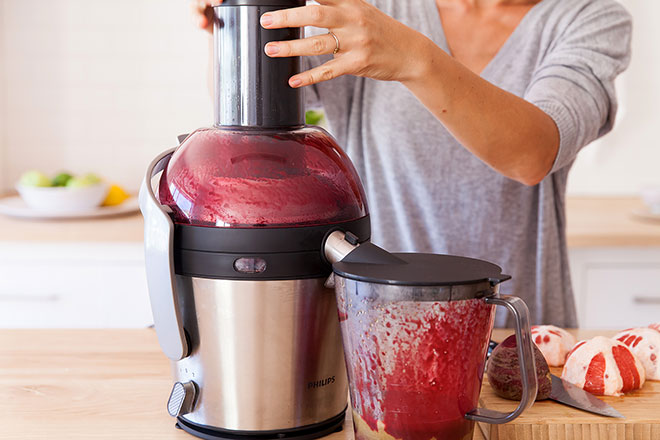Masticating vs centrifugal: what’s up with all this juice jargon?

What is masticating?
Think cow. A cow doesn’t have sharp teeth, therefore they mulch their food into cud, thereby extracting all the nutrients. Basically an auger crushes or ‘chews’ the fruit or veg at a slow and steady rate, pressing the juice and nutrients out. The juice trickles into one compartment, while a rotating grinder pushes the ‘cud’ out the other end into another compartment.
Masticating juicers are generally:
- Slower
- Quieter
- More prep
- More costly
- Better at preserving nutrients for longer
- Better at processing leafy greens and hard veg and fruit

What is centrifugal?
OK here, think sharknado. Sharp blades process the veg like a high speed grater. The circular motion forces the juices, which are lighter, though a mesh chamber to the outside walls of the juicer while the pith, which is heaver is expelled into a different chamber.
Centrifugal is generally:
- Faster
- Louder
- Less prep
- More affordable
- Better with soft and hard fruit and veg
- Oxidises sooner, so drink immediately for optimal nutrition.
There is much debate about the quality of nutrition and flavour yielded from both these respective mainstream juicer types. The crux coming down to the theory that the masticating juicers release more of the enzymes in the fruit and veg and keep your juice nutrient-packed for longer. That’s not to say that centrifuged juices aren’t nutritious and they sure do have a lot of benefits in their corner.
What are your thoughts and which ones work better for you?
